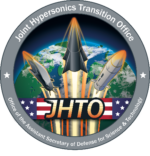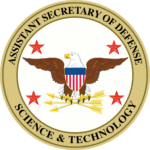Question #1: An Amendment two change indicates the agreement ceiling as “Approximately $1,500,000 per year per award.” Are we able to request more than $1,500,000 in one year and less than that amount in another year, as long as the total budget of 3 years does not exceed $4.5M?
Answer #1: Yes.
Questions #2a – b: Our proposal will include 6 sub-awardee organizations. Therefore, we will have seven Excel budget spreadsheets and seven narrative budget justifications.
2a) Will we upload seven separate Excel budget spreadsheets to the submission site?
2b) Should the seven budget justifications be included in the one proposal PDF document? Or should the justifications be uploaded as a separate PDF file?
Answer #2a: Only the lead university’s budget needs to be uploaded as an Excel document. Under the proposal submission, please upload a PDF version of any sub-award budgets.
Answer #2b: All budget justifications should be uploaded as a part of the proposal PDF.
Questions 1
Question #1: Is the RFP requesting a budget constructed in two ways: 1) by year and 2) by milestone?
Answer #1: Section VI: Pricing, requires the budget broken down for the award period of performance. Section VII: Milestone Payment Schedule, should define the milestones and payment schedule for the period of performance.
Question 2
Question #2: What are the payment terms of the project? Are payment terms to be “upon completion of a milestone only”? If so, how are adjustments of scope and adjustments of milestone cost to be handled?
Answer #2: The awarded project will be fixed price. The Government interprets “payable events” as milestone payments. If this is the case, there is no minimum or maximum number of milestone payments per year. However, milestone payments should be tied to deliverables and will be paid upon completion.
Question 3:
Question #3: The RFP indicates: “Each participant resume shall be no more than two (2) pages in length. Current and pending sponsored research projects are requested for each PI. ” Length of CVs per investigator is two pages. Is this to include current/pending or is current/pending to be a separate section as it was in the whitepaper?
Answer #3: The 2 page limit is for CVs. Current/Pending is not included in the page count.
Question 4:
Question #4: As part of preparing of the associated cost package, we need guidance regarding travel to the yearly Program Review in 2022. If the Program Review is going to be an in-person event, then where would it be held?
Answer #4: The Program Review location is still undetermined. For budgeting purposes, you may use Washington DC.
Question 5:
Question 5: In the last RPP (2020-001) next generation projects were part of the core call. This time they are not listed as an area. Is that area excluded for this call? If so, will they be included in the expected fall RPP?
Answer 5: Next generation project topics were not a part of the current solicitations (2021-001 and 2021-002). Next Gen projects may be reintroduced into the solicitation but currently we do not plan for this in the fall.
Question 6:
Question 6: With the notice of intent, does this mean universities will have to have selected their white papers to submit by that date? Or is the notice to capture all parties that will be submitting a proposal at the university pre-selection level?
Answer 6: The notice of intent should only be filed for the university’s intended white paper submissions.
Question 7:
Question 7: The Core call limits institutions to only 2 WP submissions, and the Challenge call limit is 1 per institution. To confirm, does this mean we as an institution are limited to either 2 (Core) or 1 (Challenge) per technology/topic area, or 2 or 1 total for all technology/topic areas?
Answer 7: The limit is for the solicitation, not topic, so each university may submit 2 white papers to the Core call (2021-001) and 1 white paper to the Challenge call (2021-002). Please note that amendment #2 to the Core call (2021-001) now allows for an additional white paper to be submitted to Topic 1.
Question 8:
Question 8: I have a question regarding TEES/JHTO-RPP-2021-002 Challenge Projects, Topic 1: Hypersonic Air-breathing Engine Design and Control for High Maneuverability and Operational Robustness. The topic description refers to a “reference vehicle shape.” Will the government be supplying reference vehicle shape(s) to project call bidders? If so when can we expect them?
Answer 8: While the government is working on common and representative reference shapes for research, it is not anticipated that these shapes will be available during 2021. Each PI should investigate relevant geometries pertinent to the research for now to demonstrate their work and in the future, relevant geometries will be investigated.
Question 9:
Question 9: On technology area 4, would this include the effects of weather on exhaust plume signature detection?
Answer 9: Yes, that could certainly fit the solicitation intent.
Question 10:
Question 10: The amendment says we “may also submit one additional white paper to Topic 1 (Material Characterization of Metamaterials)” which I am reading to mean we could submit two total to this topic should we want to. OR do you mean we get one (1) for Topic 1 and then two others spread out among the other 8 topics?
Answer 10: Yes, you could submit two white papers to Topic 1 and then still be able to submit one additional white paper to another topic.
Answer 11:
Question 11: Is there a standard format for the Notice of Intent (NOI) letter? What information should the letter contain?
Answer 11: The Notice of Intent will be submitted our website by the lead institution’s AOR. The NOI link can be found under Project Resources under the solicitation. The Notice of Intent should identify the topic submitting to, white paper title and include the institutions and PIs for the white paper team.
Question 12:
Question 12: Topic 4: Impact of Flight Environments (Weather in Near Space). Is the interest of this topic in understanding the space environment (e.g., how much water content is present at certain altitudes by sending in weather balloons or other means)? Or is the interest in understanding the impact of space environment on vehicle (how will water and rain drops affect the vehicle and structural load on the vehicle)?
Answer 12: Topic 4 is more directed toward understanding the impact of space environment on vehicle systems, although knowing something about the character of the environment is of course helpful to that end.
Answer 13:
Question 13: Topic 4: Impact of Flight Environments (Weather in Near Space). It mentions the defensive solutions are applicable as well. Are you interested in understanding plumes and signatures at high altitudes from hypersonic vehicles?
Answer 13: Yes, that could certainly fit the solicitation intent.
Question 14:
Question 14: Most have asked about the period of performance. It looks like it is now one year, where it had been three years in the previous solicitation; and some feel that this is not enough time to fully research their areas of interest. Can you help me understand the reasoning behind the one year structure and whether we should consider addressing what we would do with follow-on years of research?
Answer 14: The JHTO provides a broad range of solicited research aimed at our long term goals. One year solicitations are a way to seed some good ideas and provide a head start on areas. Addressing potential follow-on activities would be valuable to help the government decide if continuation of this topic in future years is warranted.
Question 15:
Question 15: For technology area 6 would it be possible to include an additional topic, an alternate, or revision to topic 8 “Throttle-able Rocket Motor Technology (GC 3 Intelligent Systems)” that would allow the use of hybrid rocket motor technology.
Answer 15: The use of hybrid rocket motor technology should be acceptable as long as it meets the intent of the solicitation in that it promotes concepts that enable control of the motor burn time. The intent of this solicitation is to maximize system performance by tailoring flight trajectory. Novel ideas toward that end should be acceptable.
Question 16:
Question 16: May additional participants (names and institutions) be added after submission of the notice of intent as teaming arrangements are finalized. Also may we change or add principal investigators if they are not included in the original white paper. Is there a requirement, and if so, what is the mechanism for notification after white paper submittal.
Answer 16: Yes, updates can be made between the white paper and proposal phases. In order for us to align our review teams, if changes are made, please send the new team information to [email protected] so we can update our information.
Question 17:
Question 17: Can PIs, co-PI, senior personnel with Green Card from the leading institution participate in those capacities (PI, co-PI, senior personnel) in this proposal? The solicitation estates “, individuals supported by a Sub-Agreement awarded as a result TEES/JHTO- RPP-2021-001 of this RWP/RPP process must be United States (U.S.) citizens prior to award”. It is not clear if applies to only sub-contracts or to anybody involved in the proposal in any capacity from any institution (leading and subcontract).
Answer 17: The citizenship requirement applies to anyone working on the project.
Question 18
Question 18: Can foreign graduate students from the leading institution participate in the work described in the proposal?
Answer 18: The government may approve, on a case-by-case basis, citizens from the United Kingdom, Australia, New Zealand and Canada.
Question 19:
Question 19: What is the TRL level expected for these proposals?
Answer 19: All proposals should suggest applied research in the areas of 6.2 to 6.3. While TRL’s are not a perfect 1 to 1 match, TRL 3 seems most appropriate. “When active research and design begin, a technology is elevated to TRL 3. Generally, both analytical and laboratory studies are required at this level to see if a technology is viable and ready to proceed further through the development process. Often during TRL 3, a proof-of-concept model is constructed.
Question 20:
Question 20: Could you please confirm if a University member of the consortium is defined as a NTDC or a non-profit research institution for this solicitation?
Answer 20: Please check with your university’s contracting or sponsored research office to see how it is designated.
Question 21:
Question 21: What is the definition or nature of the “payable event” required for the milestones? Is it a report, a metric, an actual piece/gadget, a demonstration of technology? Is there any guideline on when such payable events should be scheduled: every 3 months, every 6 months, or one-time only at the end of the period?
Answer 21: The government interprets “payable events” as milestone payments. If this is the case, there is no minimum or maximum number of milestone payments per year. However, milestone payments should be tied to deliverables. The awardee will submit the deliverable to the government, and once the deliverable is inspected and accepted by the Government, the invoice for the milestone payment can be submitted/paid.


